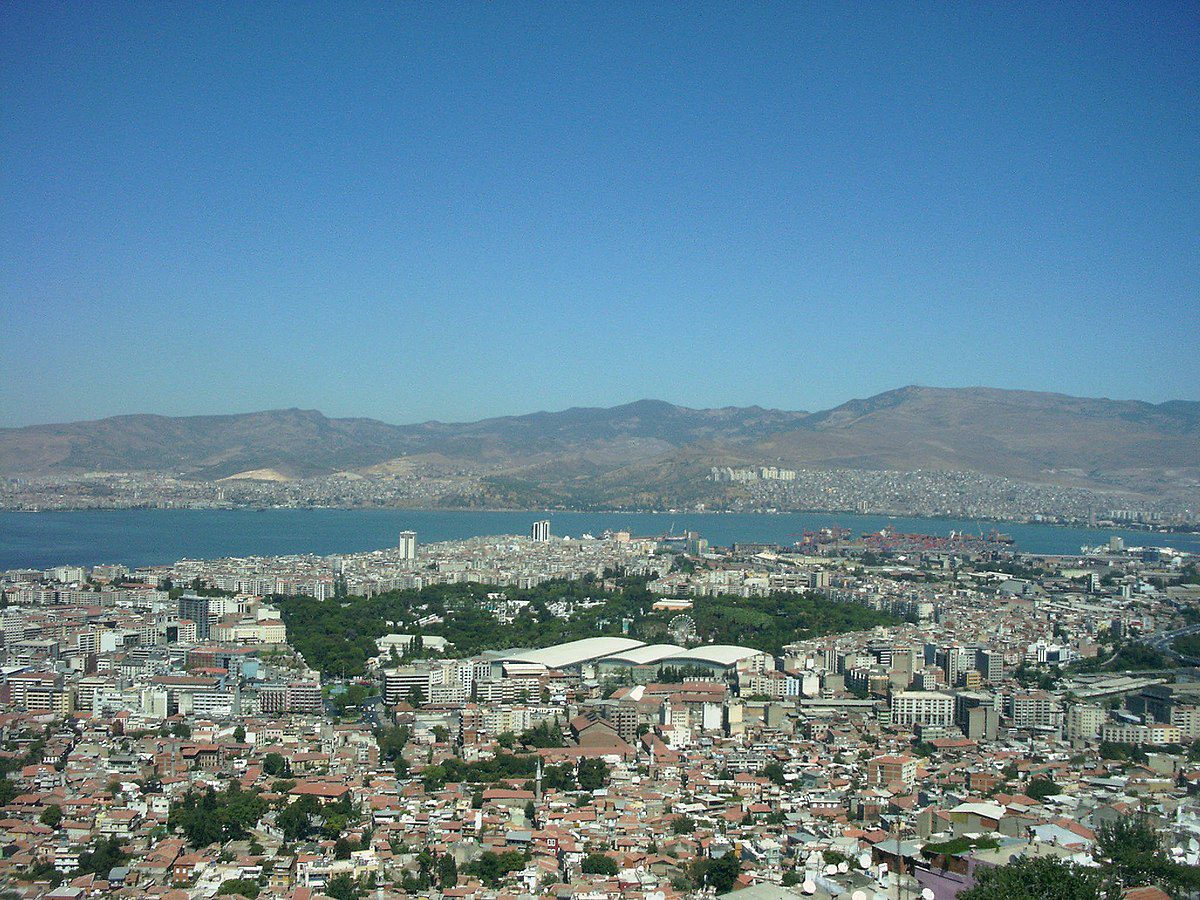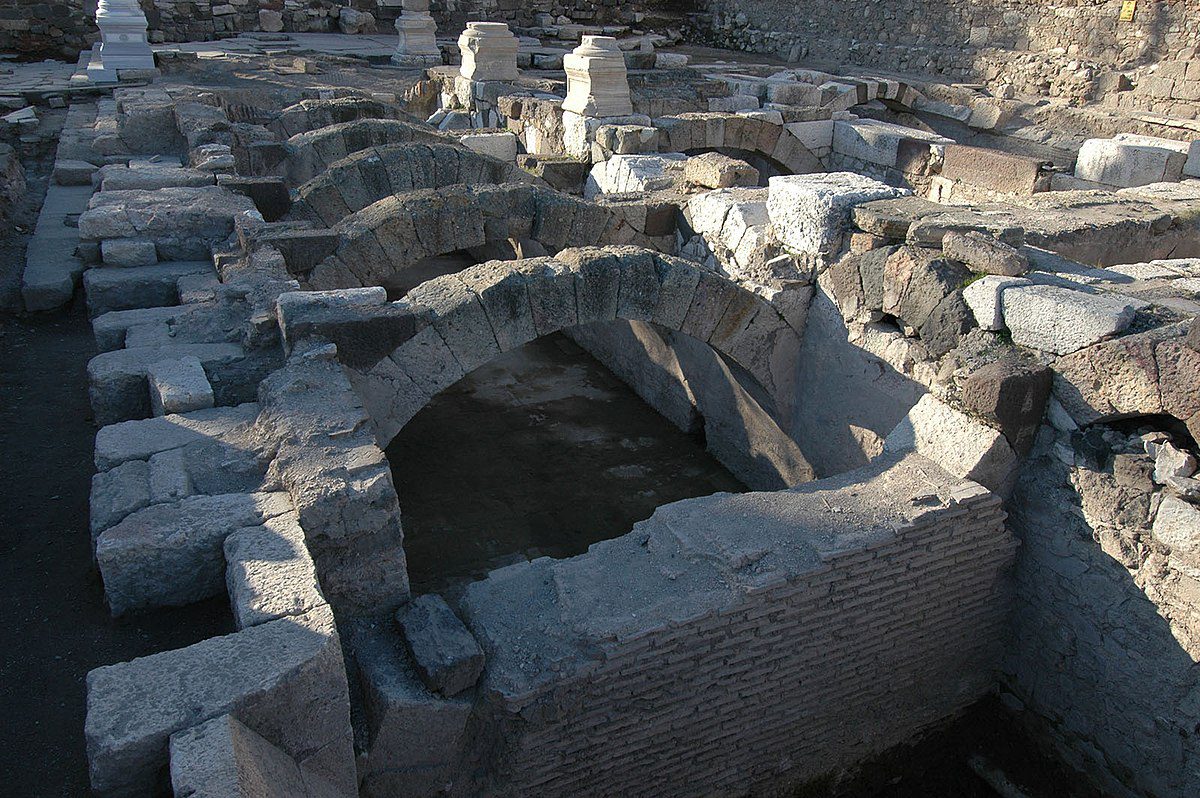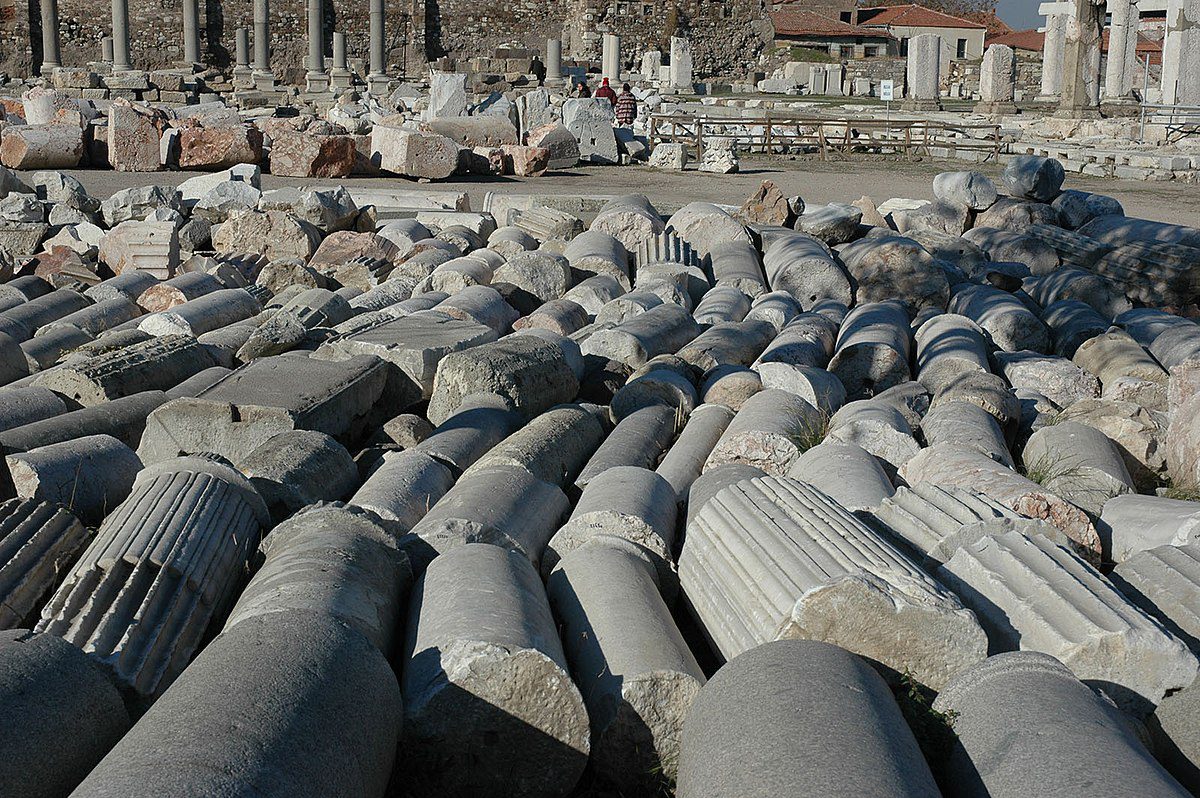Agora Open Air Museum. Photo by Dosseman. Wikimedia Commons
Top 10 Insightful Facts about Agora Open Air Museum
Located near Konak Square and the shops of kemaralti, the open-air market of Agora is a suitable place for travelers interested in the archeological sites built around 4th century BC in the ancient city of Izmir.
The museum features ruins of the ancient city of Izmir which is represented by corridors or trenches used to transport water to the city in the past.
An earthquake in 178 AD destroyed ancient Agora after which the city was rebuilt by Roman Emperor Marcus Aurelius who gave an order for it to be rebuilt.
The Agora which is three storey high was built according to the Roman city plan of Hippodamus
Visitors get a good idea of what the surprising rectangular market was like by the vaulted rooms and cisterns as well as the reconstructed Corinthian columns and the Faustina Gate.
The top 10 insightful facts about Agora Open Air Museum include the following.
1. The Museum Is the Largest and Best Preserved Among the Ionian Agoras

Agora Museum. Photo by Dosseman. Wikimedia Commons
The first excavations of the site were carried out in 1930 to 1941 by Rudolf Naumann , Prof. Dr. Miltner and the director of the Ephesus Museums in İzmir, Selahattin Kantar.
The excavations yielded the rectangular shape of the building with three floors and a staircase around which a large atrium measuring 120 meters x 180 meters in the center and on columns and arches was unearthed
The museum is the largest and best-preserved Agora among the Ionian Agoras.
2. Excavation Work Resumed in 1996 During Which Inhabitants on The Site Had to Be Resettled

City of Izmir. Photo by Andre Rolle. Wikimedia Commons
The excavation work resumed on the site on 5th August 1996, with the approval of the Ministry of Culture in cooperation with the Directorate of the Archaeological Museum and the Governor of Izmir.
The excavation proved to be a very difficult undertaking as wild developments had taken place on the site over the years. The government was forced to resettle inhabitants’ step by step to enable the excavation work to proceed.
Some parts of the Roman water pipes in the Agora are still intact enough to be used to supply the city of Izmir even today.
3. The Agora Open Air Museum Is a Tentative World Heritage Site Since 2000
Izmir, a classic modern Turkish city, lies on the coast of the Aegean Sea. The city provides many great places to visit as well as an amazing view of the sea and surrounding areas.
The Agora Open Air Museum is a historical architectural treasure in Izmir. The Agora was tentatively nominated to be part of the World Heritage Site in 2000.
4. Some Parts of The Agora Were Restored After It Was Excavated in 1933
Greeks built the Agora during the 4th century BC but afterwards it was rebuilt by an order from the Roman Emperor Marcus Aurelius after it was damaged by an earthquake that hit the region later.
When excavation of the site began in 1933, the current Agora began to take shape. Some parts of Agora museum were nicely restored after the site was cleaned up.
Thereafter the street and other areas within the museum started to take shape of the current Agora Open Air Museum in Izmir.
5. There Is an Underground Street Covered with Huge Stone Arches in The Agora

Agora Substructure. Photo by Dosseman. Wikimedia Commons
Visitors to the museum quickly find that there are many parts that attract their attention and interest. An underground street which is covered with huge stone arches is one such attraction in the museum.
The street looks like a maze of columns and massive arches which is very picturesque.
A fountain that is still working with water going into thin channels all over the place is located at the center of the maze.
6. The Museum Contains A Collection of Ruined Pillars and Columns

Ruined Columns. Photo by Dosseman. Wikimedia Commons
A collection of pillars and columns that were discovered while ruined can be viewed just next to the entrance on the right side.
The word “Constantinople” and other Latin words are clearly written in form of graffiti on one of columns. The specific column was originally in the basilica in the Agora museum in the Northwest Gate
7. An Ottoman Graveyard Is Located at The Right Corner of The Agora
The Ottomans had an artistic interest on gravestones. Rows of tombs served as a lesson on the importance of death to worshippers in religious places and as a reminder that man’s presence on earth is temporary and that man is mortal.
Ottomans cemeteries had a tombstone art culture and an ottoman graveyard with the art culture is located at the right corner of the Agora.
Some of the gravestones were preserved and look the same now as they did many years ago while many are ruined or broken of course due to the vagaries of weather over time.
8. The Agora Holds A 2000 Year Water Trench
The Agora bears witness to the history of Romans and Ottomans in the region and has welcomed visitors and travelers from all over the world over the centuries and from different cultures.
The museum offers a fraction of history to the current inhabitants of the planet with its basilica, historic murals and well-protected buildings.
Of specific interest is a water trench which is estimated to be over 2000 years old and which still functions to this day and supplies the residents of Izmir with water for use.
9. The Museum Gives Light to Civilizations Around The 4th Century AD
Recent excavations in the museum and surrounding areas in Izmir, have shed light on certain specific features of civilizations that lived during the early 4th century AD.
Graffiti of world’s first crossword was found on the wall of the basilica in the site.
Precautions taken by the ancient civilizations which built the Agora to protect themselves from threat of earthquakes could also be seen or deciphered in the museum.
10. Water Trenches in The Museum Operate to This Day
Numerous water trenches exist under the Agora with two being functional hundreds of years after they were constructed. Springs also exist in the museum which can be seen to this day.
The water trenches were built to supply water to areas without water within Izmir during those early times. The water trench that comes all the way to the Agora is still functioning and supplies residents of Izmir with water today.
Planning a trip to Paris ? Get ready !
These are Amazon’s best-selling travel products that you may need for coming to Paris.
Bookstore
- The best travel book : Rick Steves – Paris 2023 – Learn more here
- Fodor’s Paris 2024 – Learn more here
Travel Gear
- Venture Pal Lightweight Backpack – Learn more here
- Samsonite Winfield 2 28″ Luggage – Learn more here
- Swig Savvy’s Stainless Steel Insulated Water Bottle – Learn more here
Check Amazon’s best-seller list for the most popular travel accessories. We sometimes read this list just to find out what new travel products people are buying.









